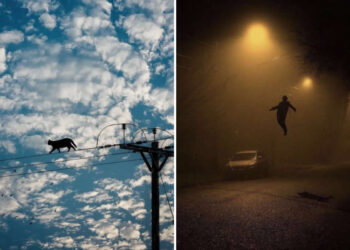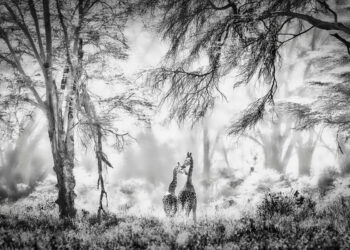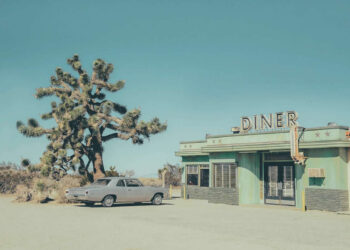Some photographs don’t just capture life — they define it. They’re more than pixels or film; they’re frozen memories that shaped how the world remembers the past. From moments of triumph and heartbreak to courage and resistance, these photos are windows into humanity’s most unforgettable chapters.
The magic of a powerful photo lies in its timing — that split second when emotion, light, and truth collide. A good picture tells a story, but an iconic one makes you feel it. It changes how you see the world. Whether it’s the flag rising at Iwo Jima, the fall of the Berlin Wall, or a protester standing fearlessly before a tank, these images are burned into our collective memory.
Each of these 20 powerful photos froze history at its rawest — the joy, the pain, the victory, and the loss. They remind us that history isn’t just dates in a textbook; it’s people, emotion, and moments that still echo through time.
So, take a journey through history’s lens — where every frame holds a heartbeat, and every click reshaped the story of humanity.
1. Raising the Flag on Iwo Jima (1945)
![]()
Photo by: Joe Rosenthal
Captured by Joe Rosenthal, this legendary photo shows U.S. Marines lifting the American flag atop Mount Suribachi during World War II. It became a global symbol of bravery, unity, and sacrifice. Beyond its wartime context, the image immortalized human perseverance under fire and continues to represent honor and courage.
2. V-J Day Kiss in Times Square (1945)
![]()
Photo by: Alfred Eisenstaedt
Alfred Eisenstaedt’s spontaneous capture of a sailor kissing a nurse on V-J Day perfectly expressed the relief and joy that swept the world at the end of World War II. It’s a photograph that defined celebration, chaos, and post-war freedom — all in one frame.
3. Migrant Mother by Dorothea Lange (1936)
![]()
Photo by: Dorothea Lange
This haunting image of Florence Owens Thompson and her children during the Great Depression became a symbol of American resilience. Lange’s photo humanized economic hardship, pushing the U.S. government to aid struggling families.
4. The Falling Man (2001)
![]()
Photo by: Richard Drew
Taken by Richard Drew on September 11, this chilling yet poignant photograph captures a man falling from the World Trade Center. It became one of the most powerful symbols of that tragic day — a reminder of both horror and humanity.
5. Lunch Atop a Skyscraper (1932)
![]()
Photo by: Charles Clyde Ebbets
Eleven construction workers casually eating lunch on a steel beam high above New York City — an image of daring and determination during the Great Depression. This fearless moment shows the grit behind America’s growing skyline.
6. Tank Man, Tiananmen Square (1989)
![]()
Photo by: Jeff Widener
A lone man blocking a line of tanks in Beijing became the global face of courage and resistance. Captured by Jeff Widener, this image embodies defiance and the power of one individual standing against oppression.
7. The Flower and the Bayonet (1967)
![]()
Photo by: Marc Riboud
Photographed by Marc Riboud during an anti–Vietnam War protest, this iconic image shows a young woman placing a flower into a soldier’s rifle barrel outside the Pentagon. It captured the tension between peace and violence — soft petals against cold steel — and became a defining symbol of the peace movement. The photo still resonates as a quiet act of resistance and hope amid chaos.
8. Man on the Moon (1969)
![]()
Photo by: Buzz Aldrin
Neil Armstrong’s photo taken by Buzz Aldrin marks humanity’s first steps on the Moon. The reflection in Aldrin’s visor shows Earth — a symbol of exploration and human potential that transcends generations.
9. The Hindenburg Disaster (1937)
![]()
Photo by: Sam Shere
As flames engulfed the German airship in New Jersey, Sam Shere captured one of the most shocking disasters of the 20th century. The image marked the end of the airship era and symbolized the fragility of human ambition.
10. Earthrise (1968)
![]()
Photo by: William Anders
Snapped by astronaut William Anders during Apollo 8, this breathtaking image of Earth rising over the lunar horizon changed how humanity viewed our planet — small, fragile, and worth protecting.
11. The Berlin Wall Falls (1989)
![]()
Photo Source: Wikipedia
Captured by multiple photographers, images of crowds celebrating atop the crumbling Berlin Wall marked the end of an era. It symbolized freedom, unity, and the collapse of division — both literal and ideological.
12. Afghan Girl (1984)
![]()
Photo by: Steve McCurry
Steve McCurry’s portrait of Sharbat Gula, a young Afghan refugee with piercing green eyes, became the face of war’s human cost. It remains one of National Geographic’s most powerful covers ever.
13. Muhammad Ali vs. Sonny Liston (1965)
![]()
Photo by: Neil Leifer
Neil Leifer’s shot of Ali towering over Liston, fists clenched in victory, captured the essence of confidence and dominance — a timeless symbol of strength and self-belief.
14. D-Day Landing (1944)
![]()
Photo by: Robert Capa
Robert Capa’s gritty photos from Normandy bring viewers face-to-face with the chaos and courage of World War II. Blurred and raw, they mirror the fear and adrenaline of history’s bloodiest day.
15. The Beatles’ Abbey Road (1969)
![]()
Photo by: Iain Macmillan
What began as an album cover turned into a pop culture monument. The photo of the Fab Four crossing Abbey Road remains one of the most recognized and imitated images in history.
16. The Kiss of Life (1967)
![]()
Photo by: Rocco Morabito
Captured by Rocco Morabito, The Kiss of Life shows a utility worker giving mouth-to-mouth resuscitation to his unconscious colleague suspended on a power pole after being electrocuted. It’s one of the most dramatic and emotional images ever taken — a literal life-or-death moment frozen in time. The photo symbolizes heroism, compassion, and the instinct to help another human being, even in the face of danger. It went on to win the Pulitzer Prize and remains one of the most moving images in photojournalism history.
17. The Death of A Loyalist Soldier (1936)
![]()
Photo by: Robert Capa
Captured by Robert Capa during the Spanish Civil War, this haunting image shows a soldier at the precise moment he is struck by a bullet. Though debated for its authenticity, it remains one of the most powerful wartime images ever taken — freezing the split second between life and death. The photo reveals the brutality of conflict and the fragility of human existence.
18. Elizabeth Eckford (1957)
![]()
Photo by: Will Counts
Photographed by Will Counts, this historic image captures Elizabeth Eckford — one of the Little Rock Nine — walking alone as a mob jeers at her for attending an all-white school in Arkansas. Her poise and silent strength amid hatred defined a pivotal moment in the American civil rights movement. The image remains a symbol of courage, dignity, and quiet resistance.
19. The Man on the Tank in Prague (1968)
![]()
Photo by: Josef Koudelka
Taken during the Prague Spring by Josef Koudelka, this powerful photo captures a defiant Czech citizen standing atop a Soviet tank as crowds gather around him. The image became a lasting symbol of resistance and the struggle for freedom during the Soviet invasion of Czechoslovakia. Koudelka risked his life to document the uprising, smuggling his film out of the country so the world could witness the truth. His photograph remains one of the most striking examples of how courage, protest, and human spirit can be captured in a single, timeless frame.
20. Black Power Salute (1968 Olympics)
![]()
Photo by: John Dominis
When athletes Tommie Smith and John Carlos raised their fists during the national anthem, John Dominis captured a timeless image of protest, equality, and pride. It remains one of sports history’s boldest political moments.
Conclusion
Each of these photographs froze more than a moment — they froze the heartbeat of history. They’re proof that one frame can echo louder than words, capturing pain, power, and progress all at once. These 20 photos remind us of who we were, who we are, and who we’re still becoming.
Photography has the uncanny ability to stop time, but its power lies in what it awakens. These timeless images continue to inspire reflection, empathy, and change — long after the flash fades. Because in the end, history isn’t just remembered; it’s seen.










